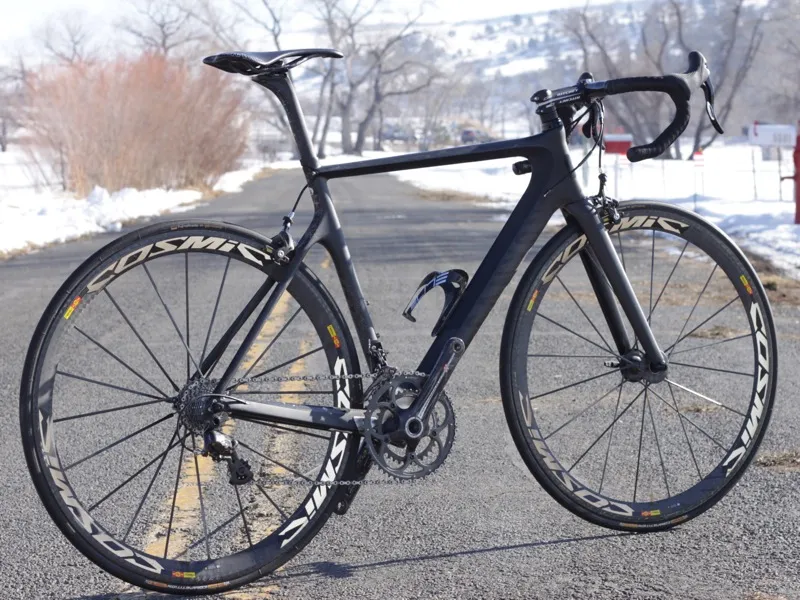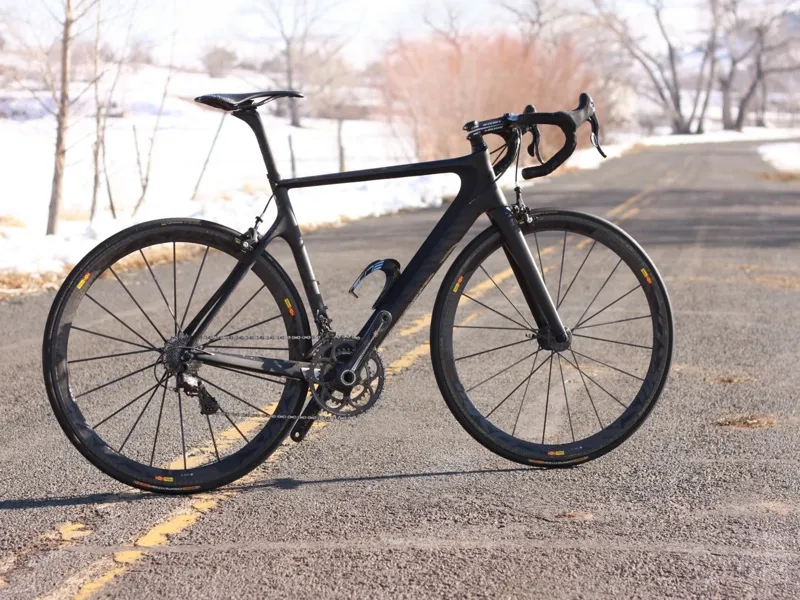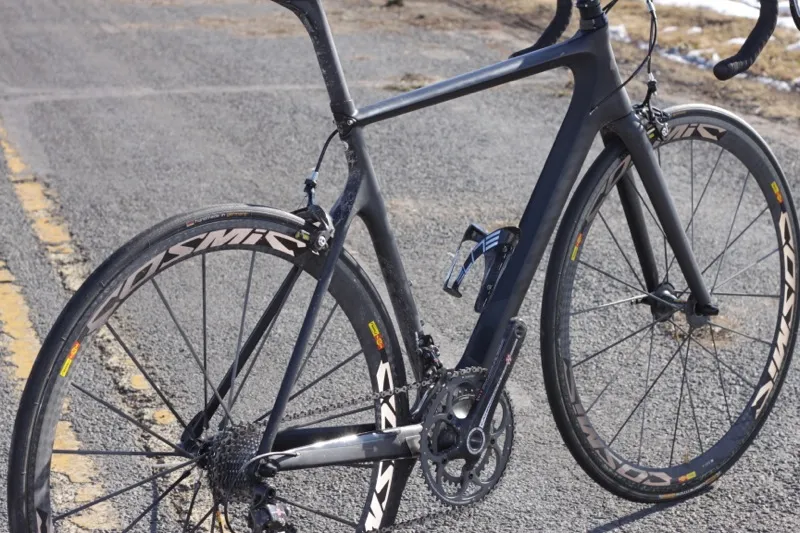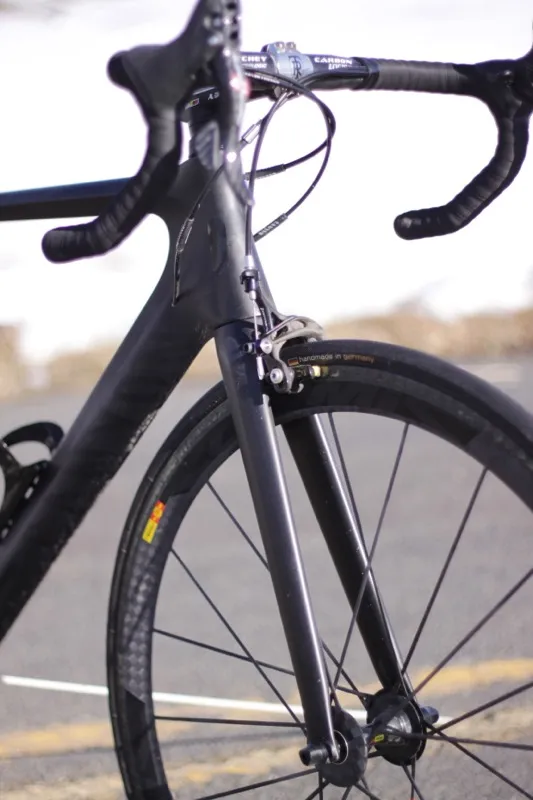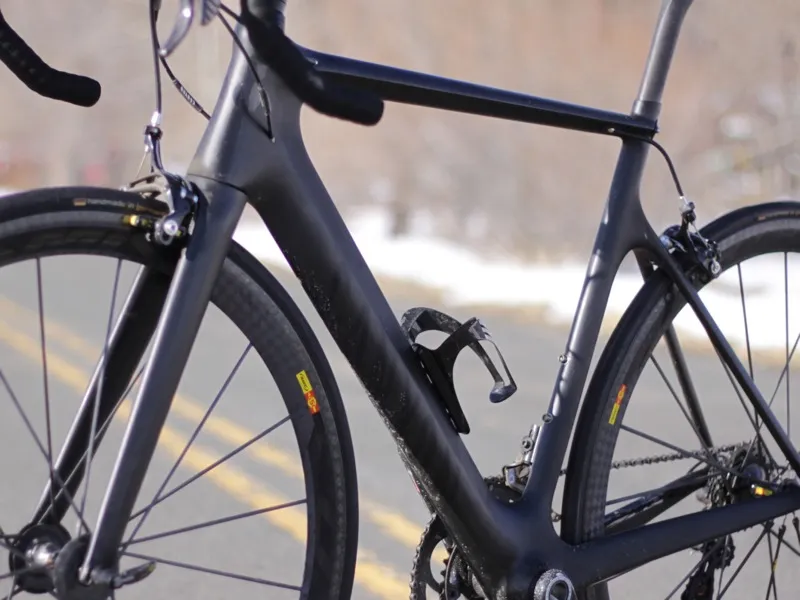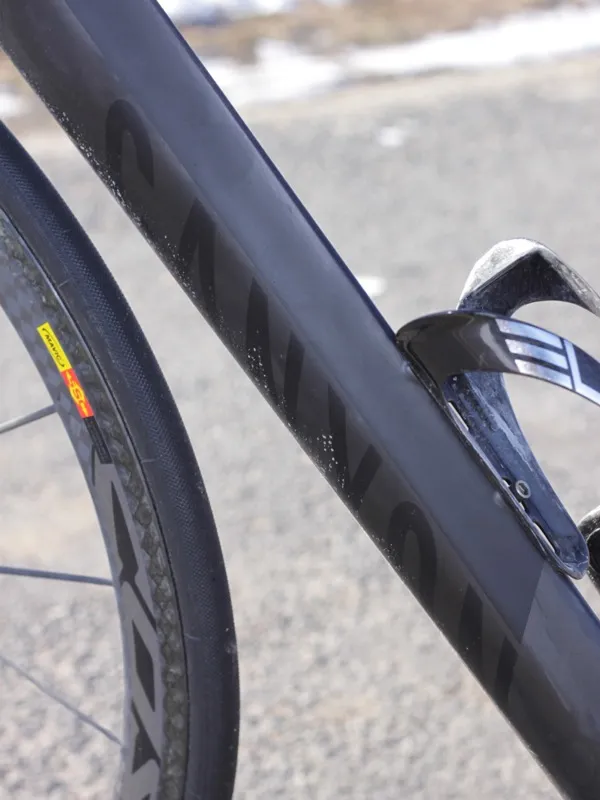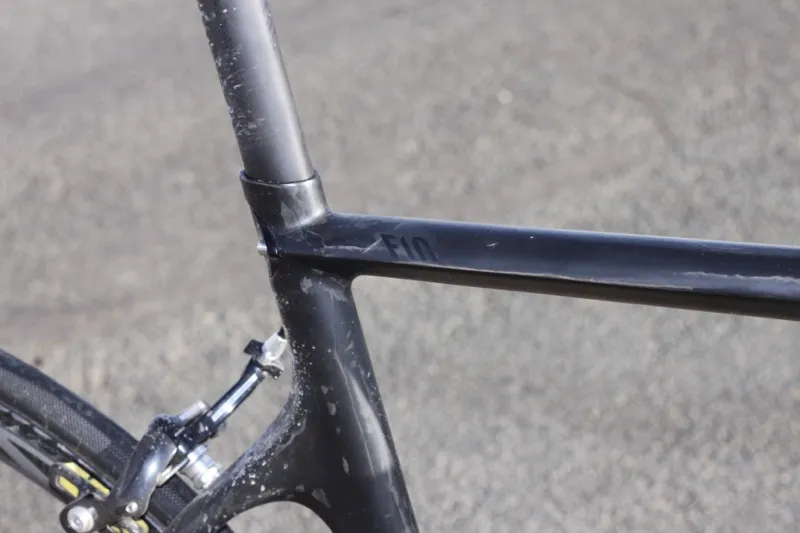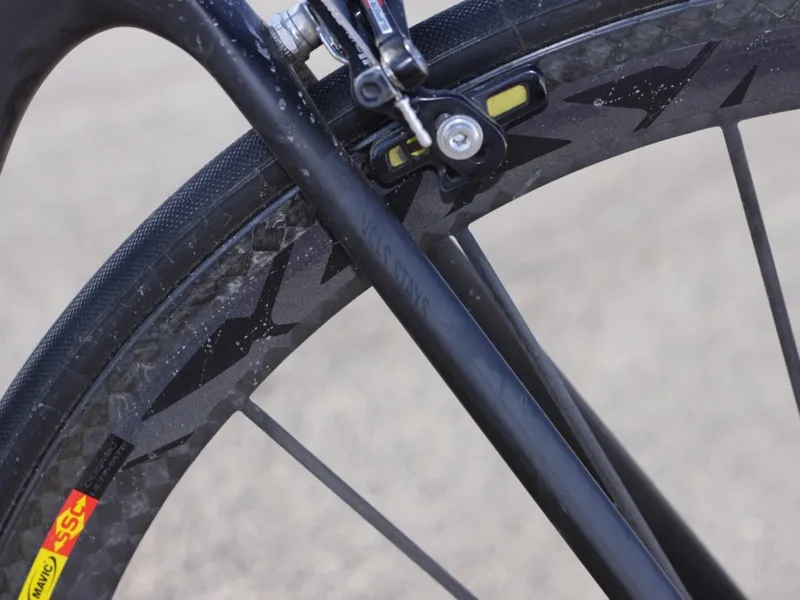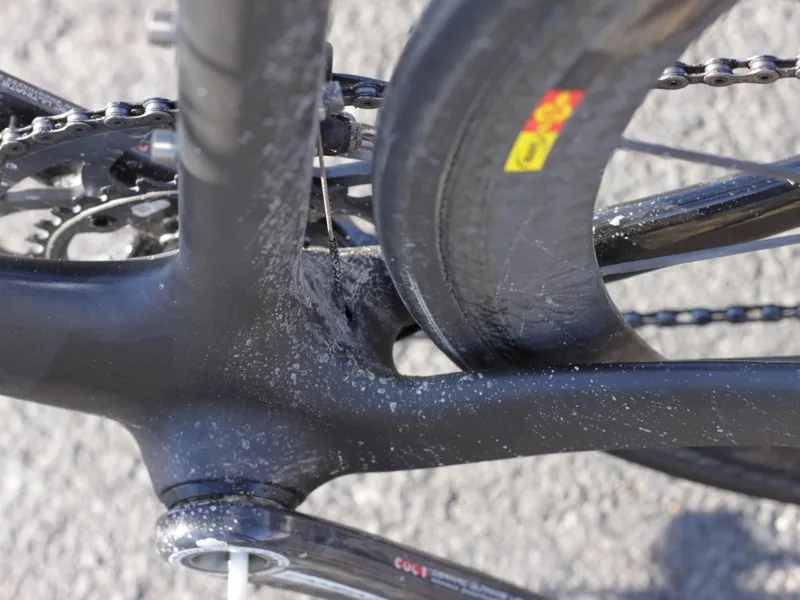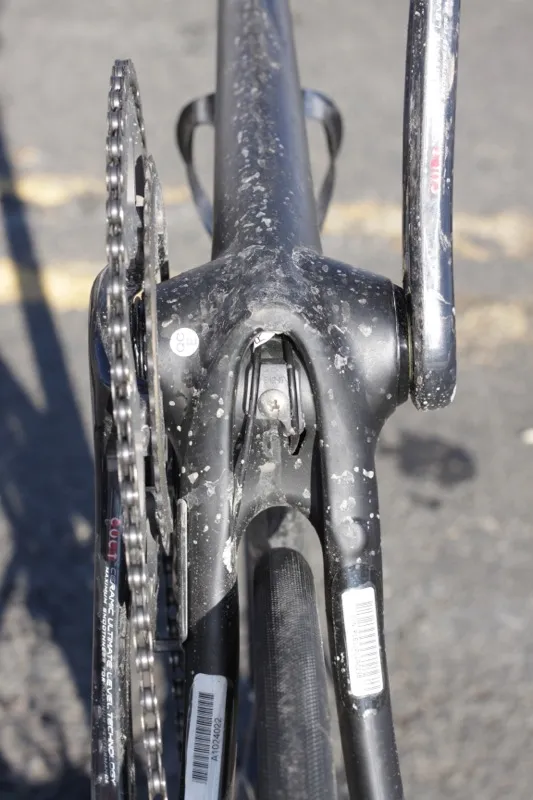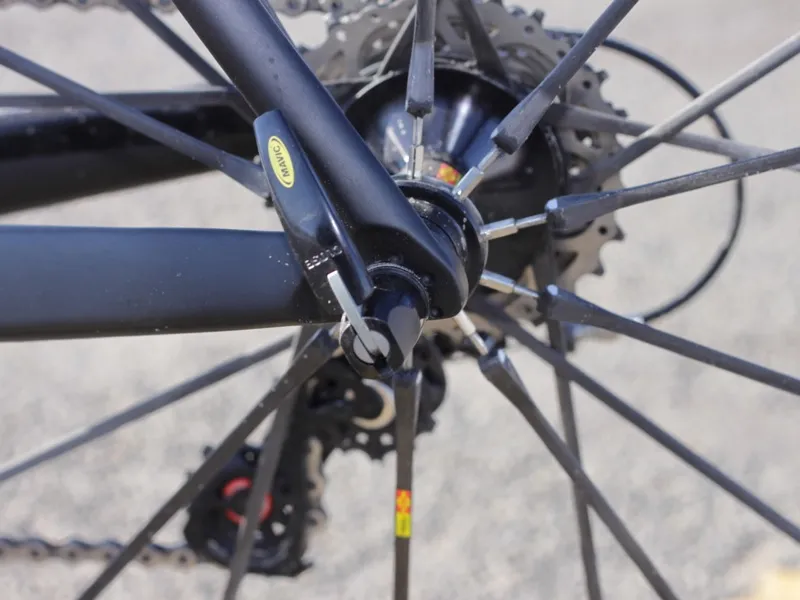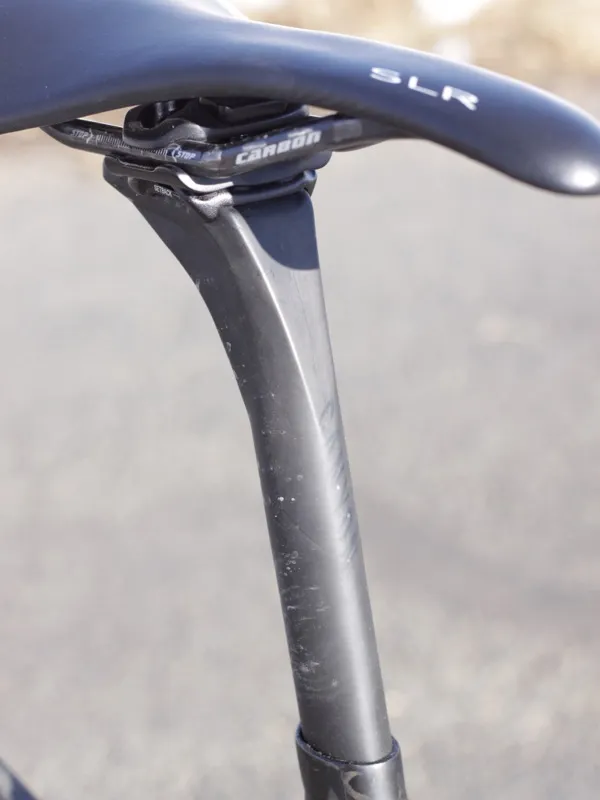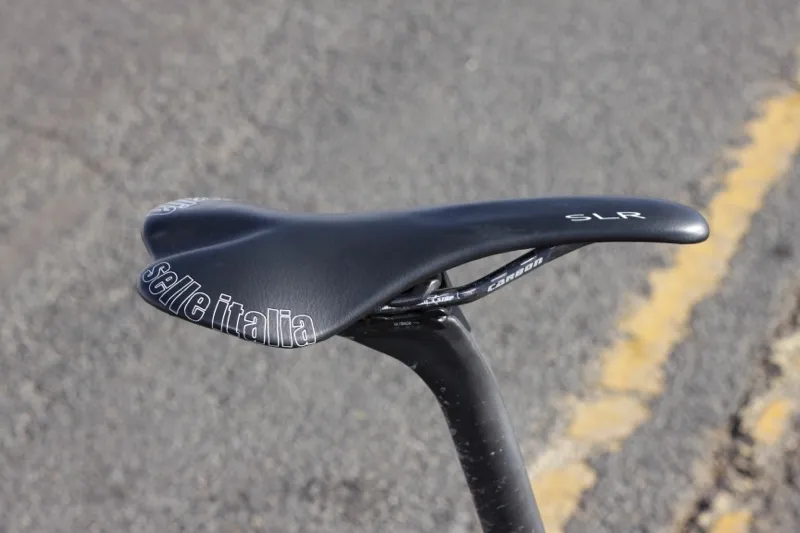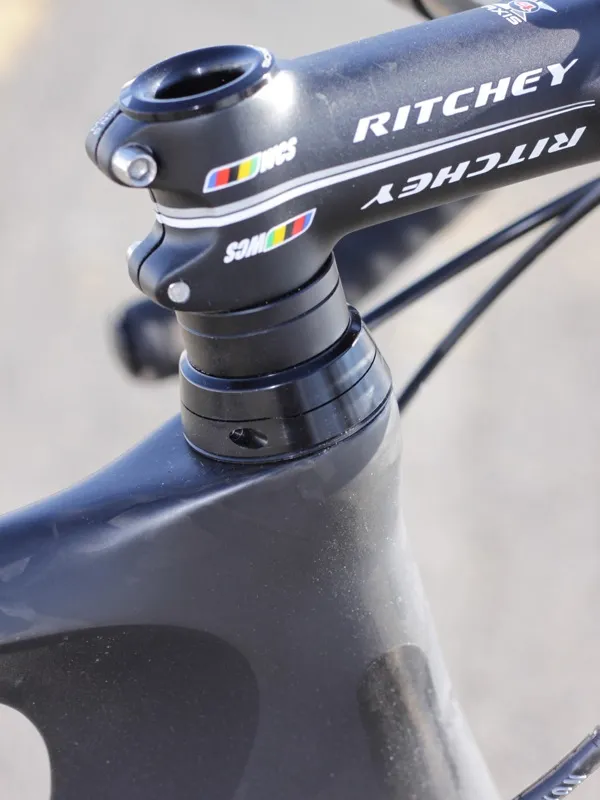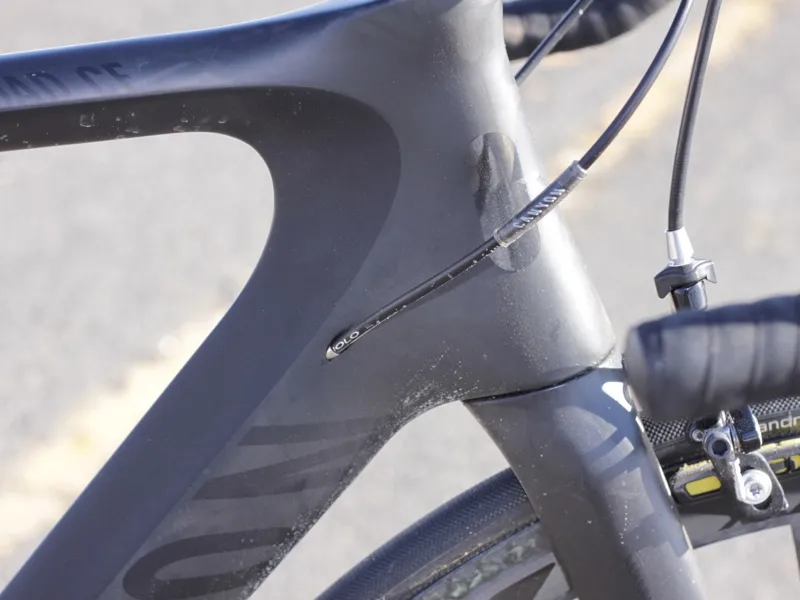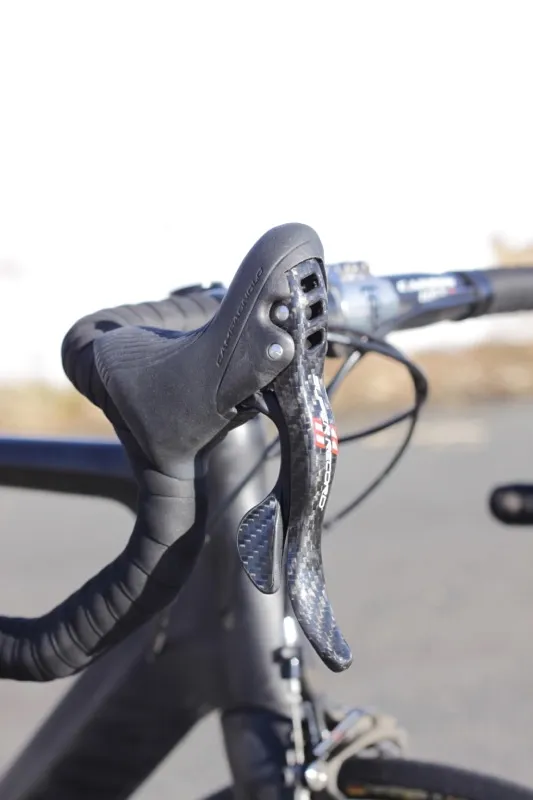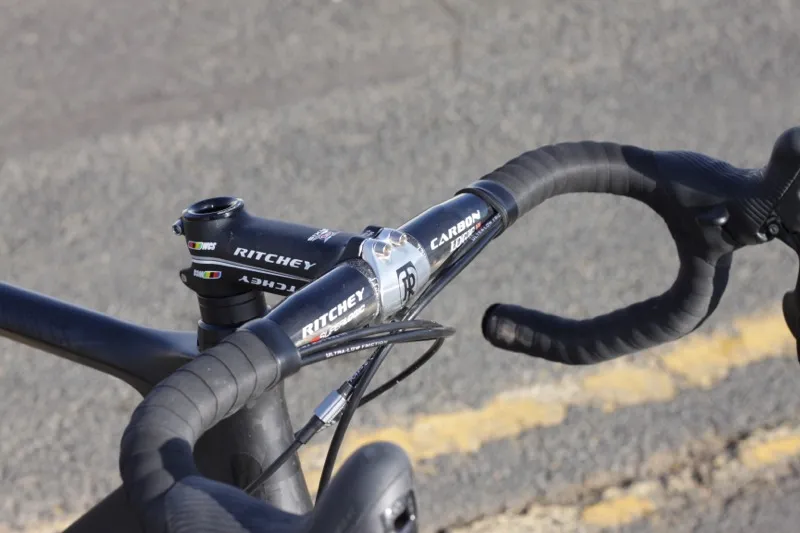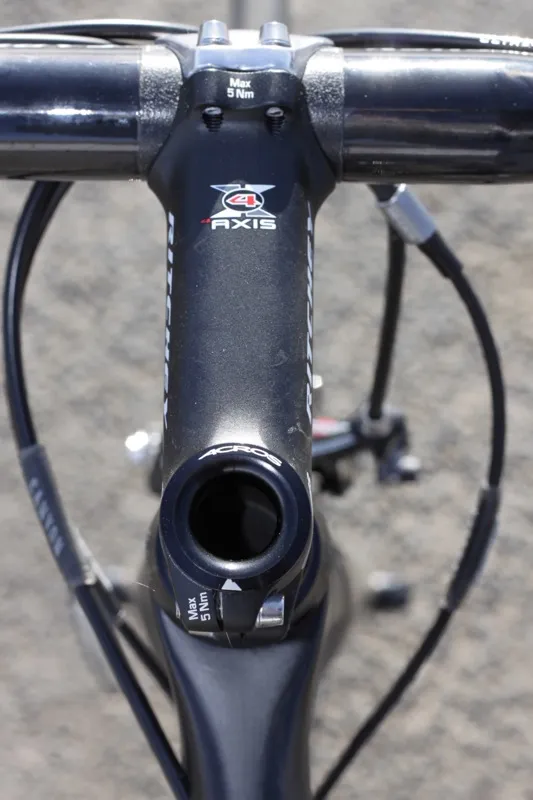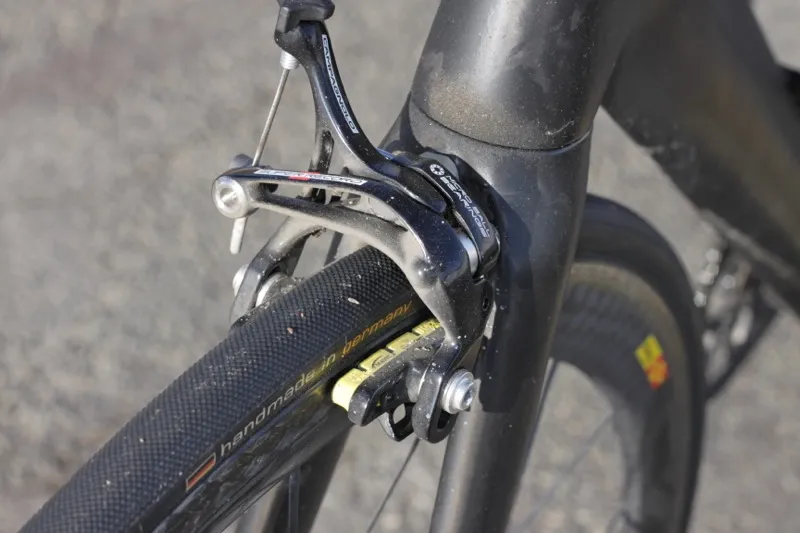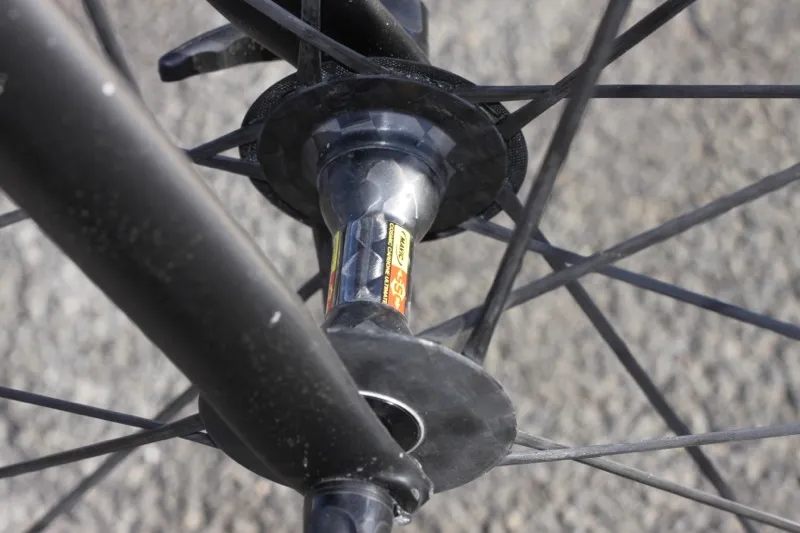Canyon have nailed the details of the Aeroad CF 9.0 Team, from the clean lines, subtle graphics and clean internal cable routing, to the host of proprietary features such as the slick seatpost and direct-press-fit headset made by Acros. It's also substantially cheaper than comparable bikes from mainstream brands thanks to the German company's direct-to-rider sales model. But its ride failed to wow us.
Ride & handling: Big ride concessions for aero gain
The AeRoad CF is marketed as an aero road bike. We didn't have access to a wind tunnel during testing, so we can't say whether the frameset provides the claimed aerodynamic benefits. What we can tell you is that Canyon have been forced to make some concessions to the ride performance of the bike in order to gain this perceived aero advantage.
The areas where this is most evident are the firm feeling ride and a lack of front end stiffness, compared to contemporary non-aero frame designs. The latter issue manifests itself when sprinting, hard cornering or descending, especially at higher speeds. This means the Aeroad doesn't feel as surefooted, and thus doesn’t inspire the same confidence, as the current crop of WorldTour race bikes.
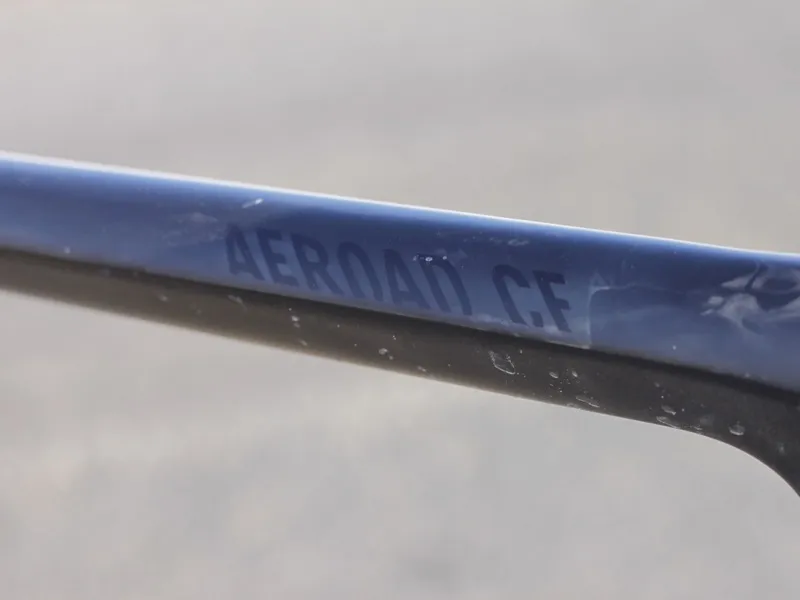
We might beef up the top tube with the hopes of bettering front end stiffness
As for pedaling stiffness and the efficiency that comes with it, we were content. The bike transfers power well, both when the rider is seated and climbing out of the saddle. Under wild, all-out sprints, however, we found ourselves bumping up against the softer front end – things get wiggly and the Aeroad just doesn’t track as well as the best of the competition.
Even with just 90psi in the tubular tires, the Aeroad CF’s ride is very firm. The tall but narrow down tube and chainstays transfer lots of road energy – both big hits and small vibrations – to the rider. The proprietary VCLS seatpost and chainstays, which are said to damp vibrations, may help some, but we found they didn’t offset the effects of the main tube shapes and firm, carbon-railed Selle Italia SLR saddle.
When we raised our issues with the Aeroad with Canyon, their US representative, Tim Maloney of Mobe Marketing, responded by explaining the bike’s pro-influenced development. “Besides the aero design, the Aeroad CF frame was designed to provide a package with stiffness, light weight, considerable comfort and rider safety,” Maloney told BikeRadar.
“Philippe Gilbert and other Omeg Pharma Lotto riders provided much specific input during the development process. The original codename for the bike was ‘Breakaway Bike’ as the design was for an aero bike with comfort where a rider could ride fast all day long. Sebastian Lang's 215km solo breakaway on Stage 2 of the 2011 Giro d'Italia; that is the essence of the Aeroad, not to mention Gilbert's super 2011 season on the Aeroad.”
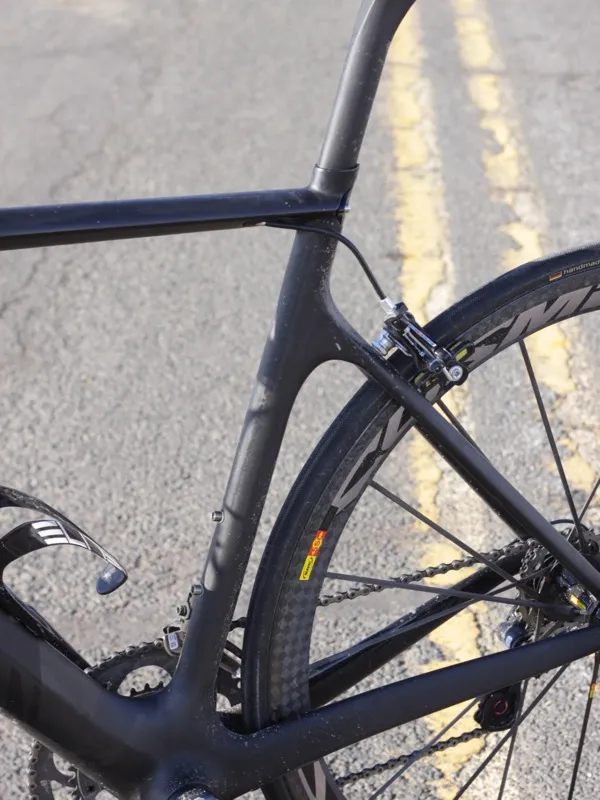
Despite the small diameters used for the seat tube and stays, and the use of VCLS, our light tester still found the ride to be very firm
Putting these criticisms aside, the AeRoad CF has something we’ve yet to experience on any other bike: ‘Shift Rake’, an impressively geeky feature that allows the rider to change the rake (offset from the centerline) of the AeroBlade fork by up to 5mm. Sweeping from one end of the adjustment to the other makes a noticeable difference to the handling of the bike – we preferred the Canyon with the rake increased, which offered a slower, more stable feel.
Overall, we weren’t really ‘wowed’ by the ride of the AeRoad CF, mostly due to its concessions in steering stiffness and comfort. It's not a bad bike by any means, but is a safe rather than exciting choice. It's definitely worth considering if its other benefits – look, value, aero performance – resonate with you.
Frame: Every detail nailed, with a subtle look
Canyon have done their homework and checked it twice when it comes to the details of the Aeroad CF. While it doesn’t wow us on the road, it certainly does in the workshop. And this isn't just because of details like the VCLS material and layup used in the fork and seatpost, or bonus features like the internal routing, Shift Rake adjustment or the cap-less I-lock headset.
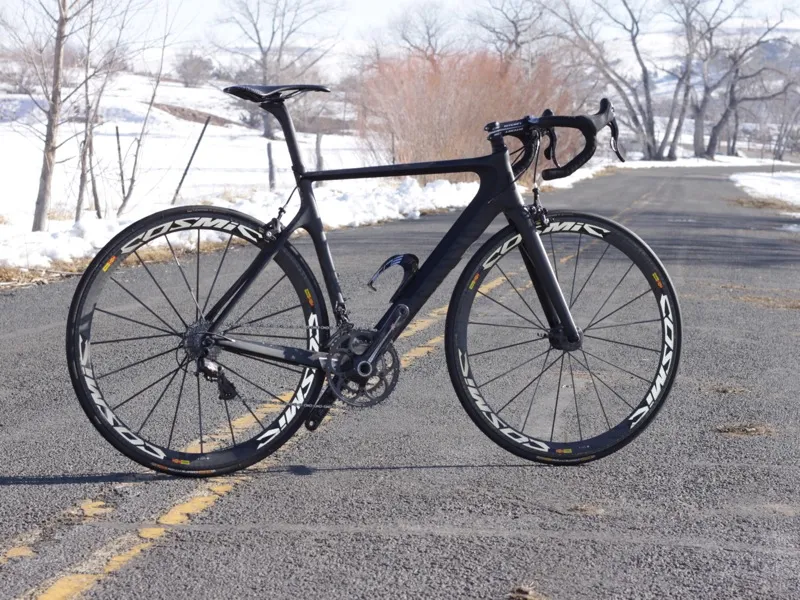
An impressive package
Rather, it’s the fact that Canyon have done an exceptional job of integrating these features and then dialing them in when it comes to fit and finish – everything from the carbon finish to the graphics and usability of each feature is excellent. And all of this detail comes in a frame that weighs just 1,003g on our scale. The fork, with integrated bearing race, is similarly impressive at 350g with a 220mm steerer tube.
Finally, we must, again, mention the look. We love the subtle style the black-on-black colour scheme offers, and it’s also impressive to see how the finishing kit complements the Canyon’s look.
Equipment: Top-notch from tip to tail, including Mavic’s CCU tubulars
For the past few years the big three component manufacturers have been waging a brutal war that’s serving to benefit us all, and as we look forward to 2013 that battle will only become more fierce, with Campagnolo’s EPS, the new SRAM Red and new Shimano Dura-Ace all set to make an appearance.
The current top-end groups may have a chink or two – SRAM’s front shifting and Shimano’s mechanical shifters could both use some work – but overall, they work pretty darn well. That's certainly the case with the Campagnolo Super Record kit supplied with the Aeroad. We'd prefer a standard crankset rather than the compact found here, and we'd swap the single-pivot rear brake for the optional dual-pivot version, but other than that we've no gripes.
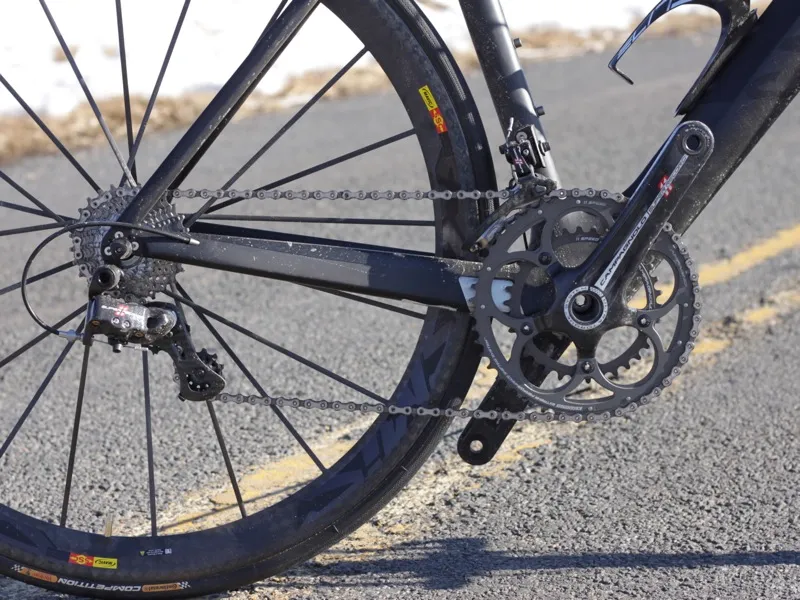
Campagnolo's Super Record proved flawless, but we would have picked the standard crank
Finishing kit includes a Ritchey 4-Axis WCS stem, which is a world stiffer than the older oval WCS model, and a matching Super Logic WCS handlebar. We found the Selle Italia SLR special edition saddle a little hard, especially when paired with the firm ride of the bike, but it’s a well liked seat and fits well with the purpose of the bike.
Mavic’s superb Cosmic Carbon Ultimate tubular wheels happen to be favorites of ours. Made from molded carbon, they're among the best all-round racing wheels available. They’re stiff without being harsh, and their 40mm rim section and sub-1,200g weight is at home in just about every environment from Tour de France climbing to World Cup cyclo-cross – they've even been raced on at Paris-Roubaix.
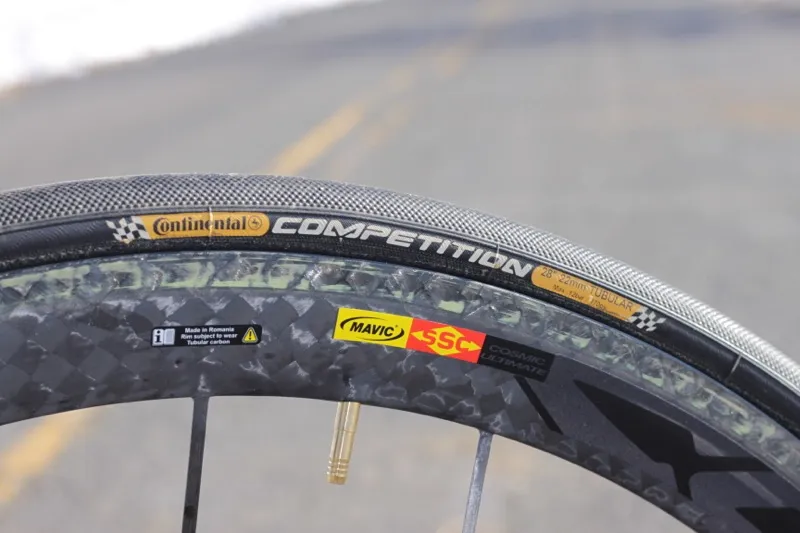
Mavic's CCU wheelset is simply awesome
Where can I buy one?
Canyon are a German company who sell direct to the public through Canyon.com. There's a sub-site for UK riders – www.canyon.com/_uk – but if you live in North America and want one of their bikes, you'll have to buy through the site and then have a third party ship it across the Atlantic.
This direct-sales model cuts out the bike shop and offers the mechanically inclined a surprisingly low price that may sway them to make the considerable effort required to buy one from the US. However, riders who rely on their local shop for buying advice and maintenance help may be left lacking necessary support, or at least paying for that support when they need it.
We generally find the act of spinning wrenches therapeutic, thus Canyon’s unique sales model resonates. Once you see what you get for your money – the Aeroad CF 9.0 Team is roughly 30 percent cheaper than comparably equipped bikes from mainstream brands, and heck, it looks darn slick – Canyon’s complete bike packages become very compelling.
Note: Review updated on 9 January 2012
